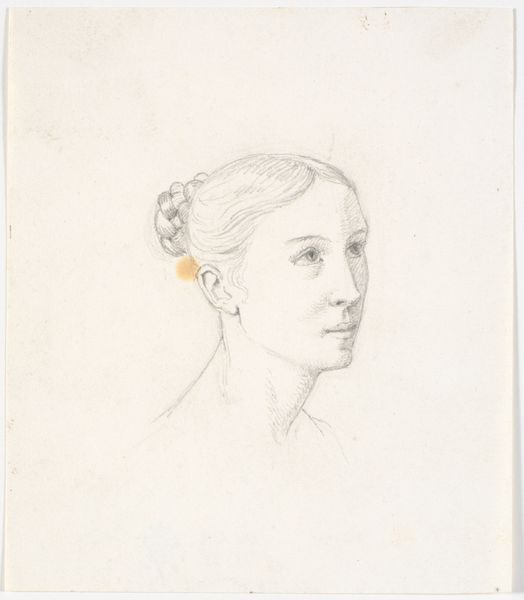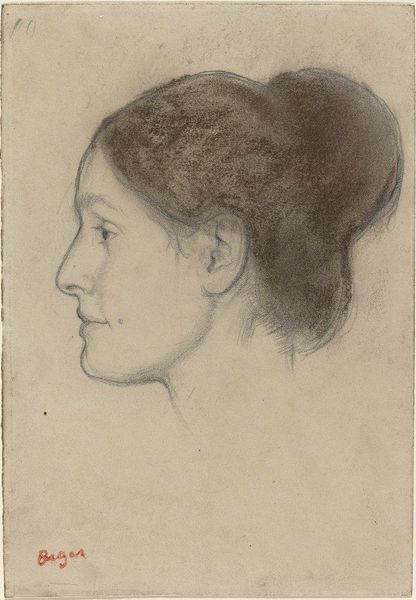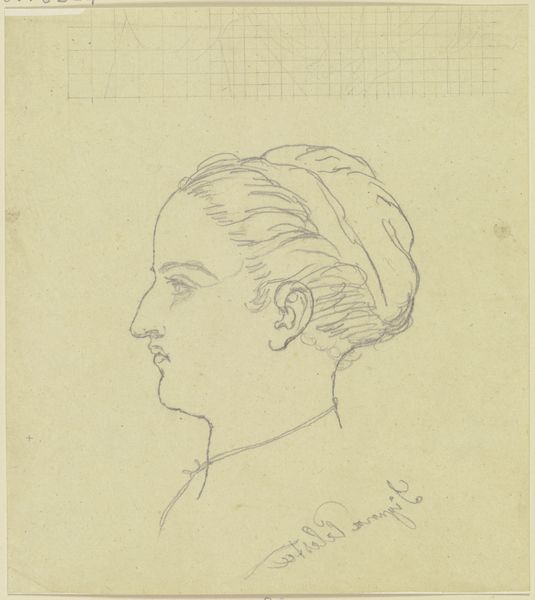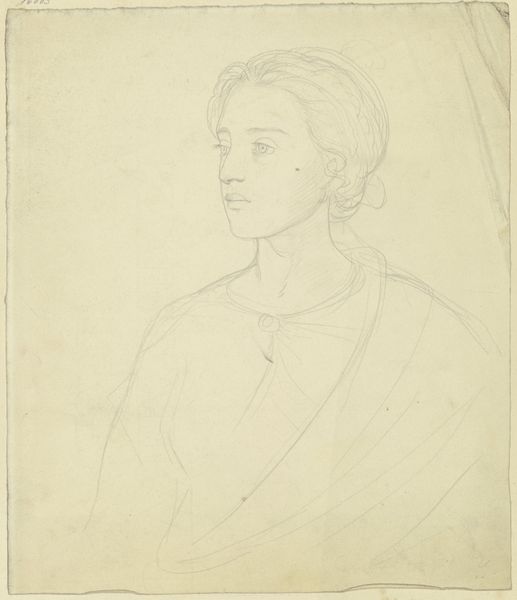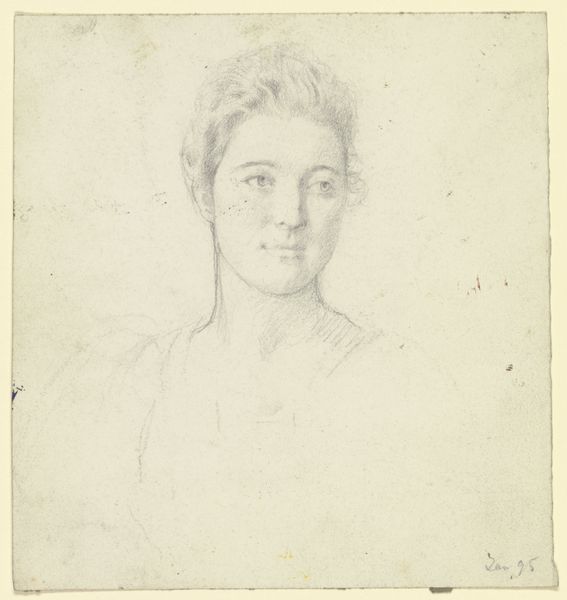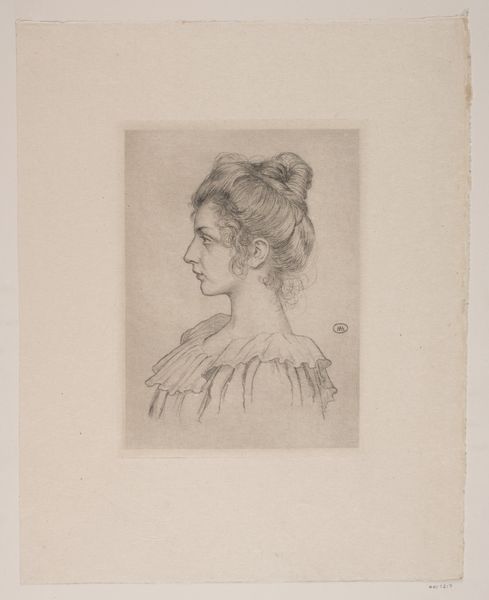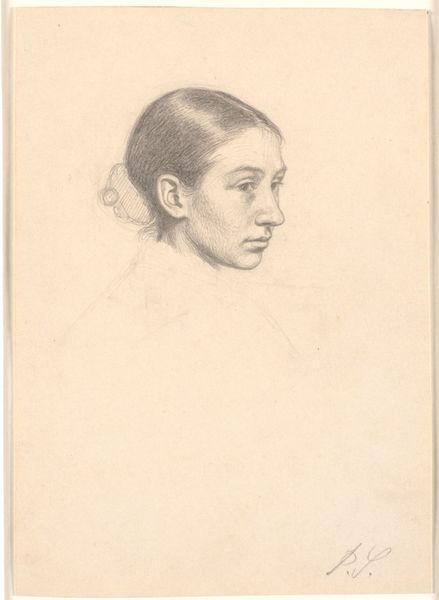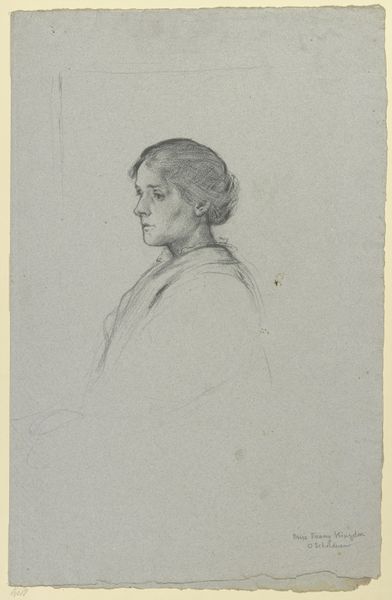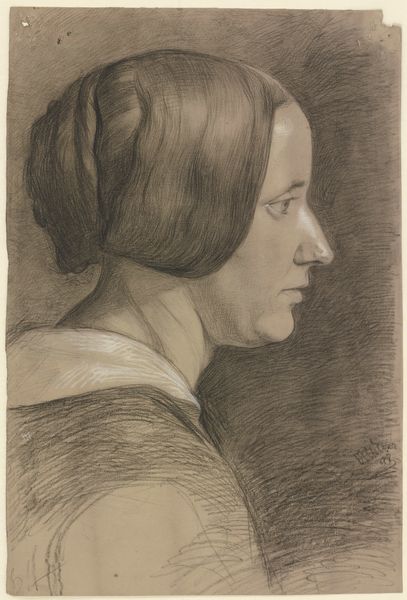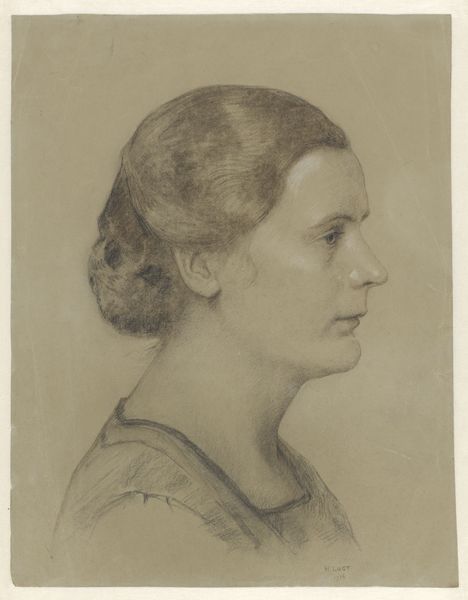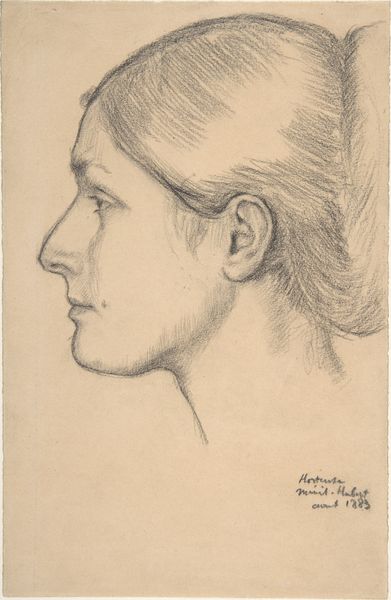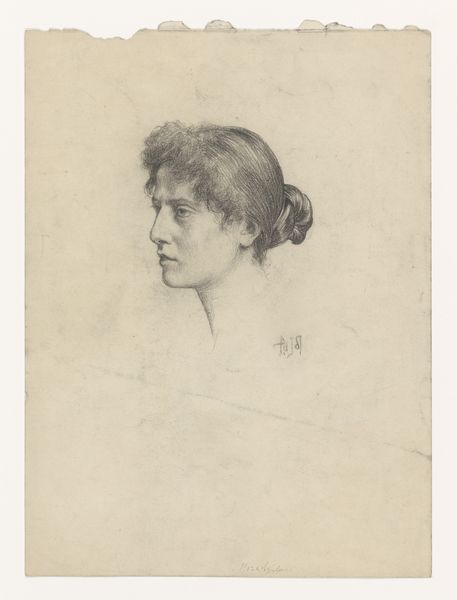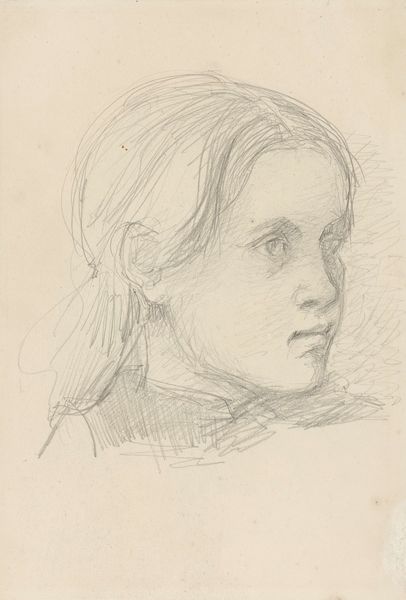
drawing, pencil, graphite
#
portrait
#
pencil drawn
#
drawing
#
toned paper
#
facial expression drawing
#
light pencil work
#
pencil sketch
#
portrait reference
#
pencil drawing
#
pencil
#
graphite
#
animal drawing portrait
#
portrait drawing
#
pencil work
#
realism
Dimensions: height 380 mm, width 297 mm
Copyright: Rijks Museum: Open Domain
Curator: What strikes me first is how immediate and personal this drawing feels. It's as if Jan Veth captured a fleeting moment of quiet contemplation in his subject. Editor: And it is intriguing how Veth positions Mevrouw Boxman-Winkler in relation to the conventions of portraiture in the late 19th and early 20th centuries. Note, this portrait was executed between 1874 and 1925. The graphite and pencil on paper give the portrait an understated quality. It resists the grandiosity often associated with commissioned portraits. Curator: Yes, it's almost anti-grand, isn't it? There’s a vulnerability in the sketchiness, a sense that we are seeing the person behind the social role. I imagine her with a cup of tea and piles of books. There's a lovely lightness to the touch that suggests a mutual respect. Editor: Precisely! This work departs from standard bourgeois portraiture. The light pencil work evokes not only delicacy, but signals also how traditional patriarchal authority was slowly being challenged during the depicted sitter's life-time. Notice how Boxman-Winkler is portrayed in a contemplative mood, reading almost, rather than in a performative or spectacular way? Curator: You can almost hear her thoughts, the scratching of her pen, and I am fascinated by the direct gaze behind those glasses. This work definitely rejects some expectations! But I'm also charmed by how her hair is piled so casually up. Editor: This subversion of the opulent portrait aesthetic—the light pencil work, her casual updo—resonates with the rising voices demanding representation, autonomy, and intellectual space. We also have to remember this was executed during a crucial time for Dutch feminists! Curator: So true, what you are suggesting casts it in an even brighter light. What was your first impression when you saw the portrait? Editor: My attention was immediately drawn to her focused expression. This image transcends a simple likeness; it captures a silent revolution—a woman thinking, reading, resisting through her intellectual life, subtly dismantling the strictures of her time. Curator: Beautifully put. It gives one hope, doesn't it? To be captured as one truly is. Editor: It definitely shows that portraiture could be used for resistance and quiet reclamation.
Comments
No comments
Be the first to comment and join the conversation on the ultimate creative platform.
